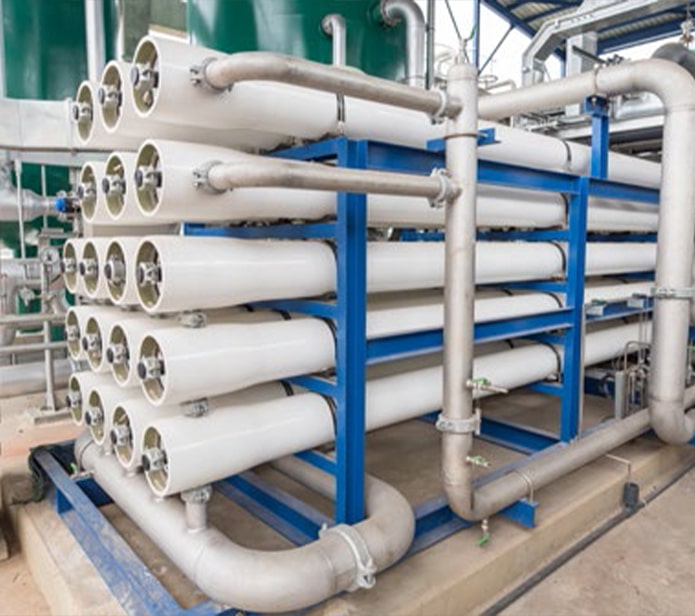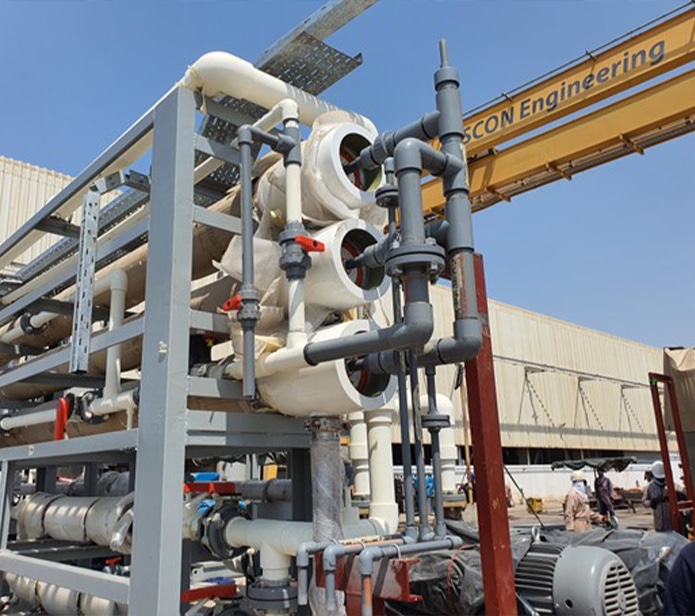Reverse Osmosis Treatment

In the reverse osmosis membrane, the natural osmosis effect must be reversed; this can be achieved by overcoming the osmotic pressure. To force the feed water to flow towards the permeate water stream, the feed water must be pressurized at an operating pressure more significant than the osmotic pressure. As a result, the feed water is separated into two streams, permeate water (Low Salinity) and Brine Stream (High Salinity).
The System is mainly consisting of pretreatment, chemical dosing stations, membrane modules and a high-pressure pump. Membrane working pressure depends on the feed water quality and can reach 60 bar in the case of seawater.
Features & Benefits
- Due to the spiral wound membrane, the system becomes very compact and require minimal footprint
- Salt rejection can reach 99.7%
- Can be delivered in containers
- RO is standardized equipment for standard requirements, customized packages also available to meet performance guarantees and specification
- Modular design, easy to expand and maintain
- Produces safe potable water according to WHO




Applications
- Nano Membrane: widely used for water softening for potable and process applications
- Reverse Osmosis Membrane: used for brackish and seawater desalination for potable and process applications
- Sulphate Removal Membrane: used for sulfate removal from seawater for injection water applications
- Reverse Osmosis Membrane: used as tertiary treatment for wastewater recycling for process (boiler, cooling) water applications
Contact

